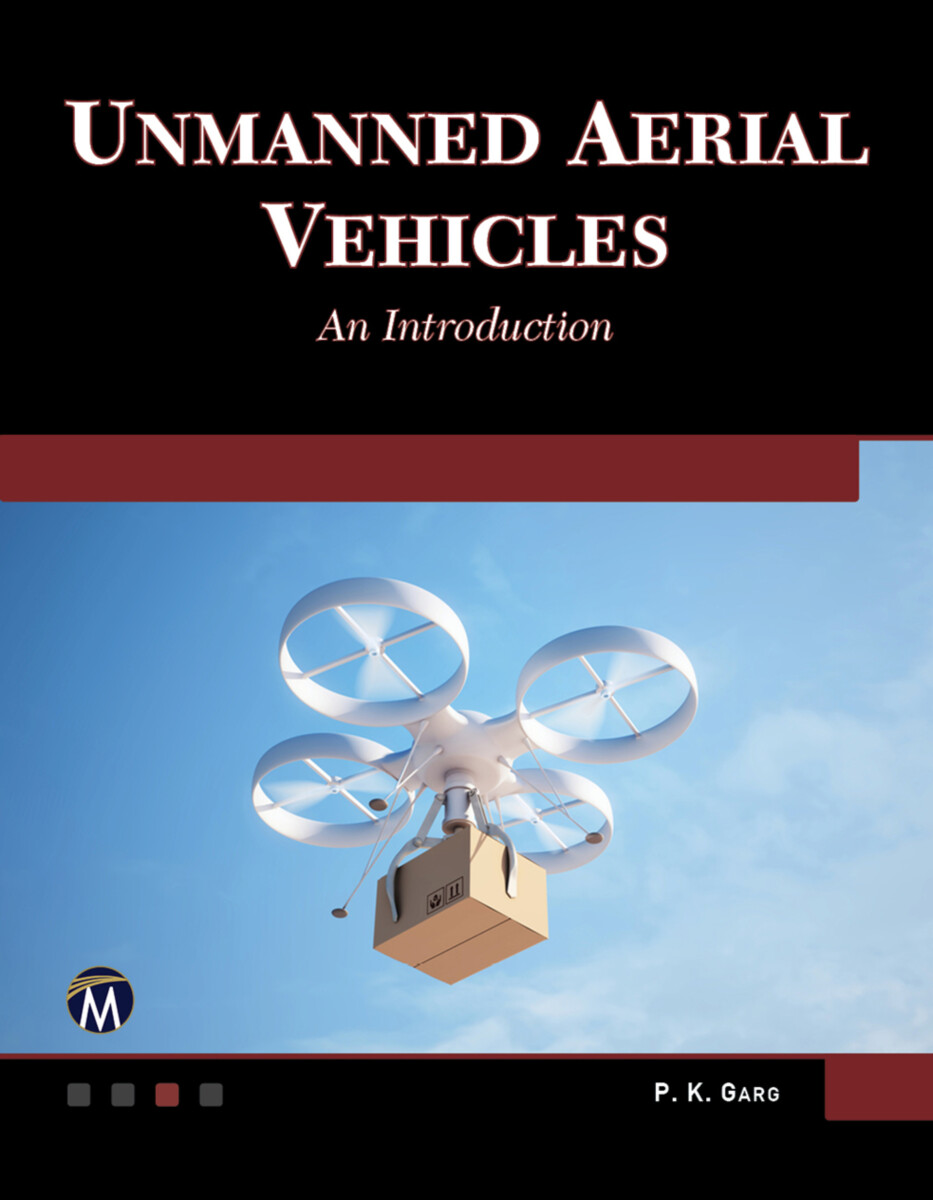Unmanned Aerial Vehicles
An Introduction
- Publisher
Mercury Learning and Information - Published
2nd August 2021 - ISBN 9781683927099
- Language English
- Pages 432 pp.
- Size 7" x 9"
- Request Exam Copy
E-books are now distributed via VitalSource
VitalSource offer a more seamless way to access the ebook, and add some great new features including text-to-voice. You own your ebook for life, it is simply hosted on the vendor website, working much like Kindle and Nook. Click here to see more detailed information on this process.
- Publisher
Mercury Learning and Information - Published
15th July 2021 - ISBN 9781683927075
- Language English
- Pages 432 pp.
- Size 7" x 9"
- Request E-Exam Copy
Library E-Books
We are signed up with aggregators who resell networkable e-book editions of our titles to academic libraries. These editions, priced at par with simultaneous hardcover editions of our titles, are not available direct from Stylus.
These aggregators offer a variety of plans to libraries, such as simultaneous access by multiple library patrons, and access to portions of titles at a fraction of list price under what is commonly referred to as a "patron-driven demand" model.
- Publisher
Mercury Learning and Information - Published
15th July 2021 - ISBN 9781683927082
- Language English
- Pages 432 pp.
- Size 7" x 9"
This book provides an overview of the basic concepts and components of UAVs, the various sensors used, architecture of autonomous UAVs, communication tools and devices to acquire real-time data from UAVs, the software needed to analyze the UAV data, required rules and regulations to fly UAVs, various application areas, and future areas of research which is needed to handle relevant challenges.
FEATURES:
- Explores the utilization of UAVs in different application areas, such as construction, oil and gas, mining, agriculture, forestry, search and rescue, surveillance, transportation, disaster, logistics, health, journalism, and many more
- Covers the theory, hardware, and software components of UAVs
- Includes end of chapter review questions for better understanding of the subject matter.
1: Overview of Unmanned Aerial Vehicles
2: Various Components of UAV
3: Autonomous UAVs
4: Communication Infrastructure of UAVs
5: UAV Data Collection and Processing Methods
6: Regulatory Systems for UAVs
7: Various Applications of UAVs
8: The Future of UAV Technology
References
Index
P. K. Garg, PhD
P. K. Garg holds a PhD in remote sensing (University of Bristol) and is a professor of civil engineering, specializing in geomatics engineering. He is a member of the advisory committee of CSSTEAP (Centre for Space Science and Technology Education in Asia and the Pacific).


